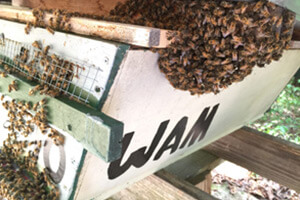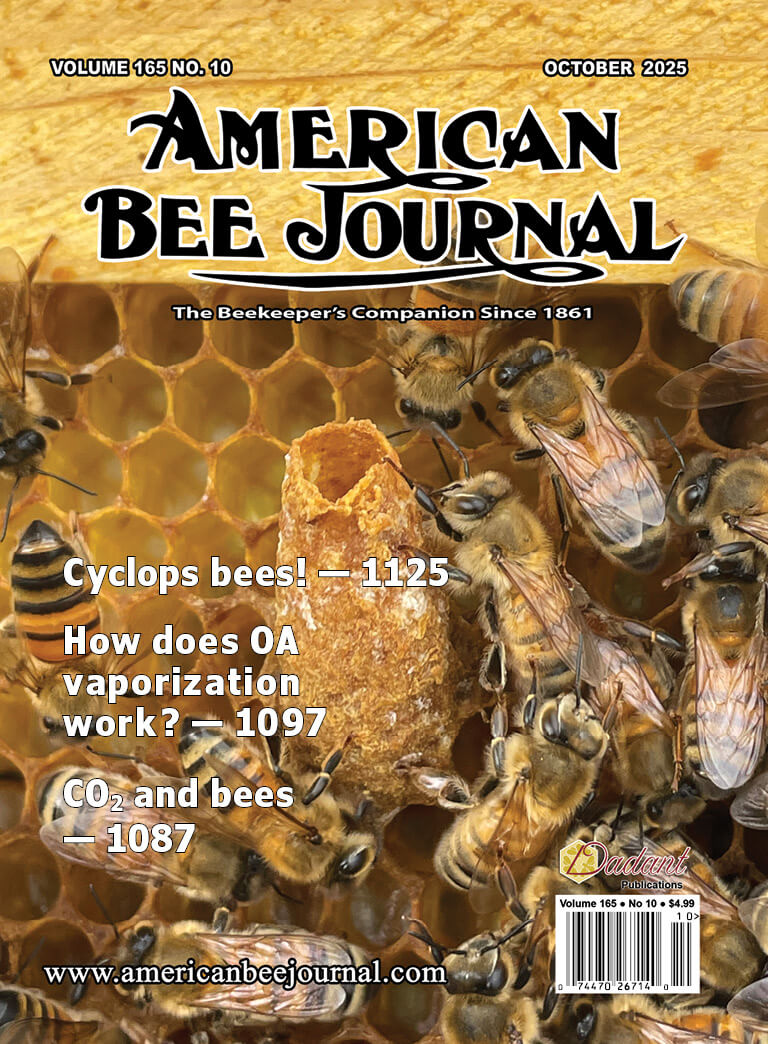Honey Bee Biology
Summer Swarms Are Far More Frequent: Our Bees Are Changing

In previous column articles, I have documented summer usurpation swarms taking over established colonies. As part of my beekeeping management, I even have begun considering mid June through most of September as usurpation season for Piedmont Virginia.
Briefly, based on my observations, here is a typical usurpation event, although I admit counter examples could occur. A swarm roughly the size of a grapefruit quickly enters a strong established colony. Initially, limited fighting occurs between the two groups of bees. The dead bees scatter in front of the hive over the next couple of days. The dead bees may resemble a minor pesticide kill, provided night-foraging ants do not remove them. Counter to the pesticide claim is the lack of numerous dead bees in front of other hives in the apiary. (A pesticide kill usually affects all colonies in the apiary.)
With the swarm in the hive, initially the bees ball both queens, the usurpation queen and the mother queen of the colony. Currently, the origin of the bee (usurpation or colony) versus what queen they ball (usurpation or mother queen) is not clear to me. Within about 24 hours and as fast as 13 hours (in a small observation hive), the usurpation queen becomes accepted by the colony, indicated by her release from the ball. Understand what the bees have achieved. That rapid acceptance is much faster than typical requeening in a summer dearth (about two or three days, maybe more).
Moreover, the newly accepted usurpation queen apparently becomes highly attractive to the bees (again their origin is unclear). Temporarily, the bees form a crowded court around her, double the bee number of a typical court of roughly 8-10 bees. The usurpation queen can even begin laying eggs, forming her brood nest, while the original mother queen of the colony is slowly dying, still held in a queen ball. The dead mother queen is among the last of the dead bees removed from the usurped colony. (Look for her out front on the ground.) On the other hand, I have seen a couple of usurpations fail. Upon entering a difficult observation hive pipe, the usurpation queen in the swarm was stung before the ball formed around her, which could be for her protection.
The beekeeper may miss seeing usurpation events because they can happen quickly and grass subsequently hides the dead bees. However, summer swarms, the possible precursor to a usurpation event are more noticeable in the apiary. (I will be conservative and call these swarms, summer swarms, or just swarms, unless they usurp a colony.) These summer swarms are the subject of this article, emphasizing their behavioral differences from the more well-known spring swarms.
The summer of 2016 was odd in that I saw about a dozen summer swarms, but did not witness any usurpations. Some of that may have been my fault because I kept tinkering with the swarms as shown below. Still, it is not clear to me whether all those summer swarms were intent on usurping a colony. However, their presence in the apiary indicated the possibility of usurpation, perhaps more so if the swarm landed on a hive. From descriptions I have heard from beekeepers and my observations, a typical landing place seems to be right under the entrance. The usurpation …
Photo Caption
Figure 1. A small summer swarm clustered on Hive 10. I found the queen in the swarm and caged her, getting control over the swarm. In doing that, I disturbed the swarm too much. Many bees dispersed and never reclustered with the queen. This hive was not near the house where I could watch it daily. Had it been, I would have left it alone and just watched.


